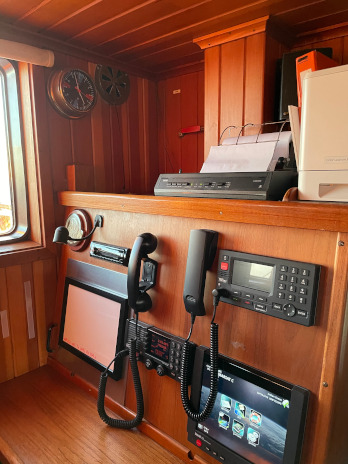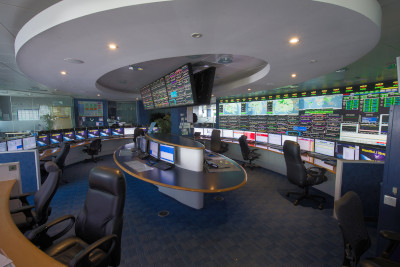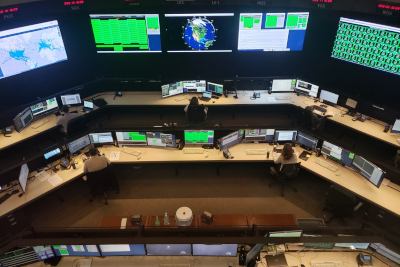What is the GMDSS?

The Global Maritime Distress and Safety System (GMDSS) is the technical, operational, and administrative structure for maritime distress and safety communications worldwide. It was established in 1988 by the International Maritime Organization (IMO) which adopted a revised text of Chapter IV of the International Convention for the Safety of Life at Sea, 1974, (SOLAS) – dealing with Radiocommunications – and was implemented globally between 1992 and 1997.
The GMDSS establishes the types of radiocommunications equipment that ships are required to carry, how this equipment shall be used and maintained and provides the context within which governments should establish the appropriate shore-based facilities to support GMDSS communications.
Basic concept
Before the advent of the GMDSS, vessels in distress relied on their ability to alert other ships using flags, flares, or radio communications to obtain assistance (perhaps most famously in the sending of a distress message from the Titanic). The GMDSS changed this by establishing a new fundamental principle that a ship in distress should send an alert to a shore-based rescue coordination centre, which would then accept the responsibility of co-ordinating the necessary rescue efforts. Thus, the GMDSS became inextricably linked with the parallel implementation of the International Search and Rescue Convention (SAR Convention) and the development of shore facilities within the structure of the World-Wide SAR Plan.
In addition to improving the capability of ships to declare their distress and receive assistance co-ordinated from the shore, the GMDSS also provided for the broadcast of essential safety-related information – Maritime Safety Information (MSI) – which could be received automatically on-board ships and would offer ships the chance to navigate more safely on a routine basis.
Functional Requirements
The GMDSS provides that every ship, while at sea, shall be able to perform the following nine basic communication functions:
TRANSMITTING:
ship-to-shore distress alerts (by at least two separate and independent methods)
RECEIVING:
ship-to-shore distress alerts (by at least two separate and independent methods)
TRANSMITTING AND RECEIVING:
ship-to-ship distress alerts
search and rescue co-ordinating communications
on-scene communications
signals for locating
maritime safety information
general communications
bridge-to-bridge communications

Area of Operations
SOLAS provides that “…every ship shall be provided with radio installations capable of complying with the functional requirements … throughout the intended voyage …”.
Thus, every ship must carry a core set of basic equipment that is applicable to all waters, supplemented by additional equipment that extends the ship’s communications capabilities according to areas of operation. These supplementary requirements are defined by the distance offshore the ship will travel:
Sea Area A1
The area within the radiotelephone coverage of at least one very high frequency (VHF) coast station in which continuous DSC alerting is available.
Sea Area A2
The area, excluding sea area A1, within the radiotelephone coverage of at least one medium frequency (MF) coast station in which continuous DSC alerting is available.
Sea Area A3
The area, excluding sea areas A1 and A2, within the coverage of a recognized mobile satellite service supported by the ship earth station carried on board in which continuous alerting is available.
Sea Area A4
An area outside sea areas A1, A2 and A3.
Use of recognised mobile satellite services
Recognised mobile satellite services (RMSS) play a crucial role in GMDSS by providing a means of communication in areas outside Sea Areas A1 and A2.
The following services have been recognised by IMO and are in operational use:
• Inmarsat C
• Fleet Safety (in the coverage area of the Middle East and Asia region)
• Iridium Safety Services
IMO has also recognized the BeiDou Message Service System (BDMSS) for use in the GMDSS pending the completion of its implementation.

Inmarsat Network Operations Centre

Iridium Satellite Network Operations Centre (SNOC)
Application
The GMDSS generally applies to all ships of 300 gross tons and upwards on international voyages. However, the GMDSS is of equal valuable for other vessels, including recreational and other vessels which do not have a mandatory requirement under SOLAS to install equipment. GMDSS carriage requirements are also applied to some fishing vessels by national legislation.
Maritime Safety Information

MSI is a broadcast of essential safety-related information such as navigational warnings, meteorological warnings and forecasts to ships. The shore authorities co-operate to structure this broadcast in such a way that receiving equipment can discriminate between information that is relevant to a particular ship and other information that is not relevant.
There are two systems a ship can use to receive MSI: NAVTEX and Enhanced Group Call (EGC):
• NAVTEX is a terrestrial MF system, used to make broadcasts up to around 450 miles from the transmitter. Broadcasts are co-ordinated in time, coverage and content so that ships can limit what they receive to only the specific information relevant to the waters in which they are operating. NAVTEX transmissions are provided for most of the highly populated coastal waters of the globe;
• EGC is used for the broadcast MSI via satellite to Sea Area A3.
Watchkeeping
SOLAS places responsibilities on ships to maintain watches on specific frequencies for distress and safety communications, so ship-to-ship alerting is retained in the GMDSS.
IMO Performance Standards
Performance Standards are IMO’s series of operational criteria that each type of equipment must meet; they also set out how the equipment should be maintained, and the basic qualifications needed to operate the equipment safely and reliably.
Reserve power
SOLAS specifies the means to be employed to ensure the operation of the radio equipment through reserve sources of electrical supply.


